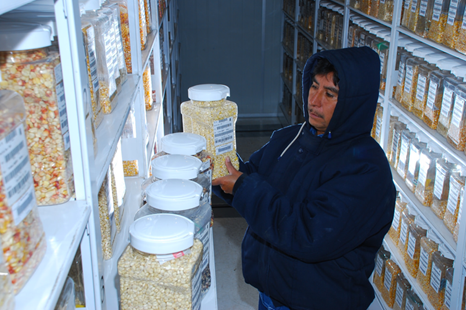
NEW DELHI — Conserving and using agricultural biodiversity to create better crops can help meet several sustainable development goals and stave off further species extinctions, according to scientists at the first International Agrobiodiversity Congress.
About 75 percent of plant genetic diversity worldwide has been lost since the beginning of the 20th century and 30 percent of livestock breeds are at risk of extinction, according to the Food and Agriculture Organization. Meanwhile, humans only consume about 1.5 percent of edible plants and only three of these – rice, maize and wheat – contribute nearly 60 percent of calories and proteins obtained by humans from plants. This huge loss in biodiversity due to environmental degradation caused by humans – what many scientists refer to as earth’s “sixth extinction”– is detrimental to global food security and the environment.
“Just a 7-10 percent loss of any major food crop would result in prices quadrupling,” says Howarth Bouis, founder of HarvestPlus and 2016 World Food Prize winner. “Non-staple food prices in India have [already] risen by 50 percent over the past 30 years.” A lack of agricultural diversity puts the world’s entire food chain at risk if a shock – such as increased instances of drought or crop diseases due to rising temperatures from climate change – were to destroy a particular type of crop.
As part of a global response to these challenges, researchers in collaboration with farmers are gathering seed to conserve and protect in genebanks across the world for future generations. These banks are the foundation of agriculture, food security and dietary diversity.
“We don’t know what scientists will need in 30 years,” says Marie Haga, executive director of the Crop Trust. “We need to conserve the entire spectrum [of seeds]. If it’s not being used right now, that does not mean it won’t be critically important in the future.”
New advancements in DNA-sequencing and phenotyping technologies have also created an opportunity to actively use the genetic information of these seeds that did not exist just a few years ago. Crop breeders can now more rapidly and effectively identify seeds that have traits like enhanced nutritional qualities, drought or heat tolerance, or disease resistances to create better crops that withstand challenges related to malnutrition, climate change, disease and more.
For example, in 2012 approximately 23 percent of Kenya’s maize production was lost due to an outbreak of the disease Maize Lethal Necrosis (MLN). Thanks to the efforts of the International Maize and Wheat Improvement Center (CIMMYT) and other partners, there are now 13 hybrid varieties with tolerance to MLN – created in just four years.
Delegates to the congress also tackled issues regarding the effective and efficient management of genebanks, biosafety and biosecurity, intellectual property rights, access to germplasm, benefit sharing from use of germplasm, and farmers’ role in conservation of genetic resources and other related themes.
The Congress culminated with the adoption of “The Delhi Declaration on Agrobiodiversity Management” that recommended harmonizing multiple legal systems across countries to facilitate the safe transfer of genetic resources, developing and implementing an Agrobiodiversity Index to help monitor the conservation and use of agrobiodiversity in breeding programs, promoting conservation strategies for crop wild relatives and other strategies to strengthen agricultural biodiversity’s role in agricultural development.
 Capacity development
Capacity development